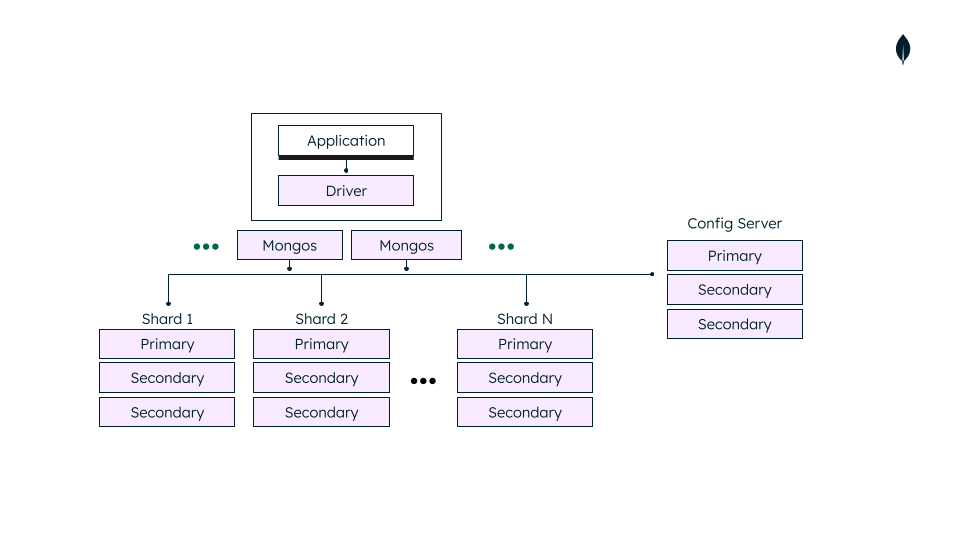- Sharding >
- Sharded Cluster Components
Sharded Cluster Components¶
On this page
A MongoDB sharded cluster consists of the following components:
- shard: Each shard contains a subset of the sharded data. As of MongoDB 3.6, shards must be deployed as a replica set.
- mongos: The
mongosacts as a query router, providing an interface between client applications and the sharded cluster. - config servers: Config servers store metadata and configuration settings for the cluster. As of MongoDB 3.4, config servers must be deployed as a replica set (CSRS).
Production Configuration¶
In a production cluster, ensure that data is redundant and that your systems are highly available. Consider the following for a production sharded cluster deployment:
- Deploy Config Servers as a 3 member replica set
- Deploy each Shard as a 3 member replica set
- Deploy one or more
mongosrouters
Replica Set Distribution¶
Where possible, consider deploying one member of each replica set in a site suitable for being a disaster recovery location.
Note
Distributing replica set members across two data centers provides benefit over a single data center. In a two data center distribution,
- If one of the data centers goes down, the data is still available for reads unlike a single data center distribution.
- If the data center with a minority of the members goes down, the replica set can still serve write operations as well as read operations.
- However, if the data center with the majority of the members goes down, the replica set becomes read-only.
If possible, distribute members across at least three data centers. For config server replica sets (CSRS), the best practice is to distribute across three (or more depending on the number of members) centers. If the cost of the third data center is prohibitive, one distribution possibility is to evenly distribute the data bearing members across the two data centers and store the remaining member in the cloud if your company policy allows.
Number of Shards¶
Sharding requires at least two shards to distribute sharded data. Single shard sharded clusters may be useful if you plan on enabling sharding in the near future, but do not need to at the time of deployment.
Number of mongos and Distribution¶
Deploying multiple mongos routers supports high
availability and scalability. If a proxy or load balancer is between the
application and the mongos routers, you must configure it for
client affinity. Client affinity allows every connection from a
single client to reach the same mongos. For shard-level high
availability, a common pattern is to place mongos instances on the
same hardware that mongos instances are already running on.
Another option is to embed mongos routers with
application tier infrastructure.
There is no limit to the number of mongos routers you can
have in a deployment. However, as mongos routers
communicate frequently with your config servers, monitor config server
performance closely as you increase the number of routers. If you see
performance degradation, it may be beneficial to cap the number of
mongos routers in your deployment.
The following diagram shows a common sharded cluster architecture used in production:

Development Configuration¶
For testing and development, you can deploy a sharded cluster with a minimum number of components. These non-production clusters have the following components:
- One
mongosinstance. - A single shard replica set.
- A replica set config server.
The following diagram shows a sharded cluster architecture used for development only:

Warning
Use the test cluster architecture for testing and development only.
See also